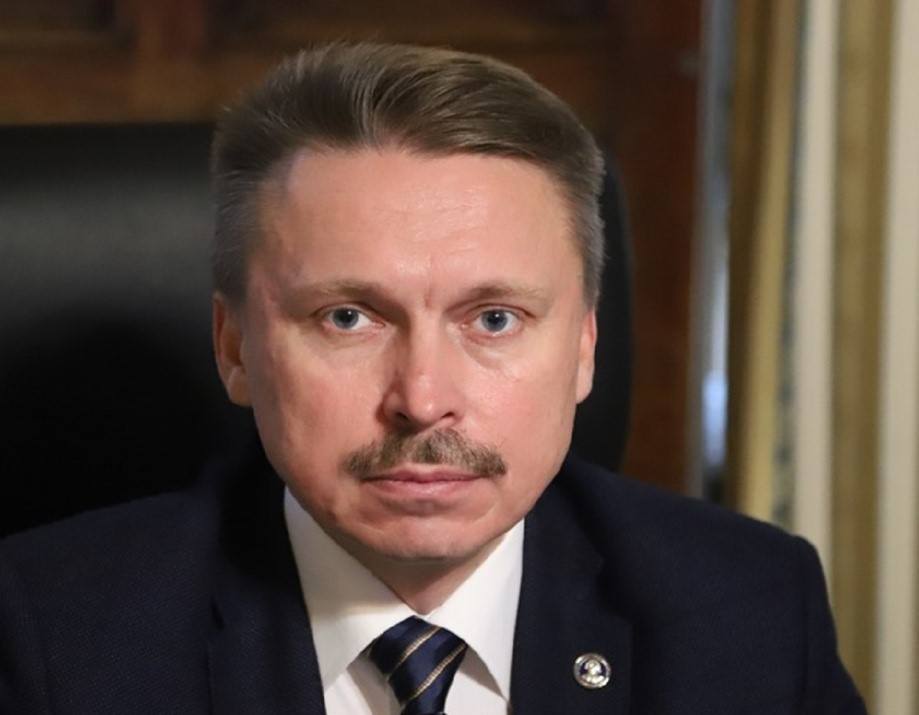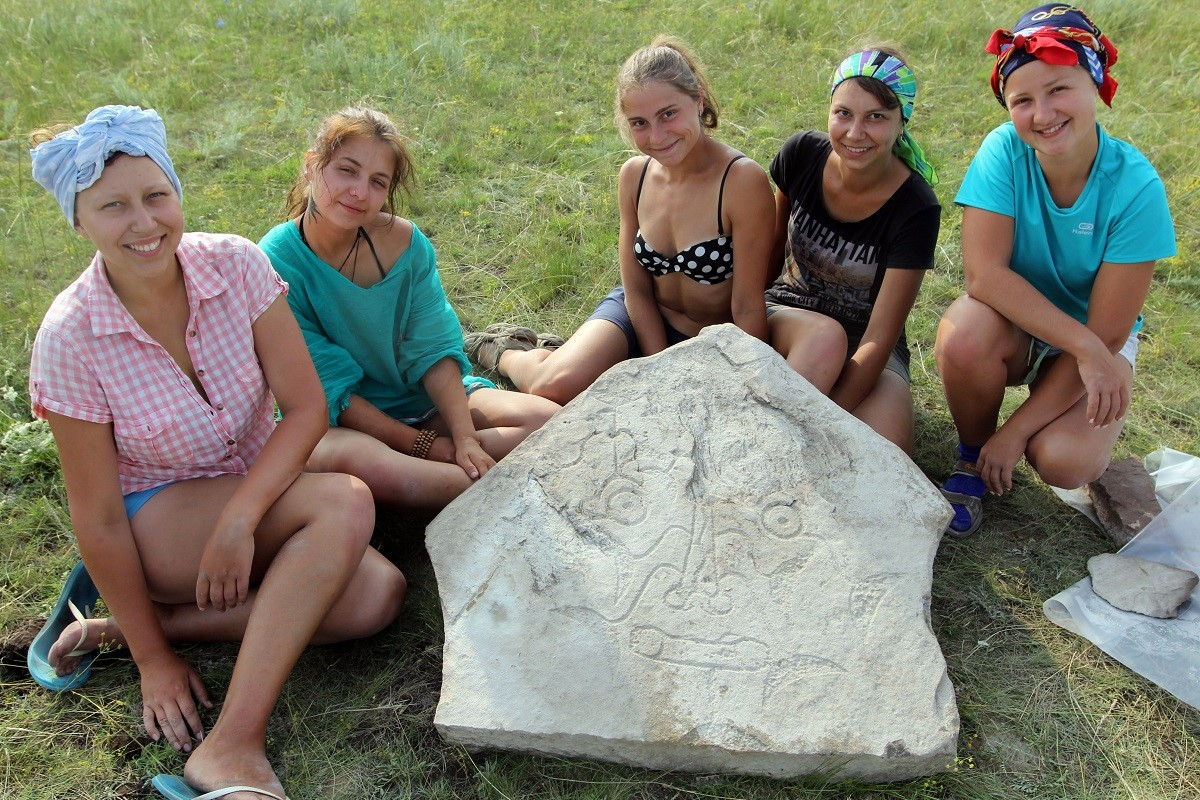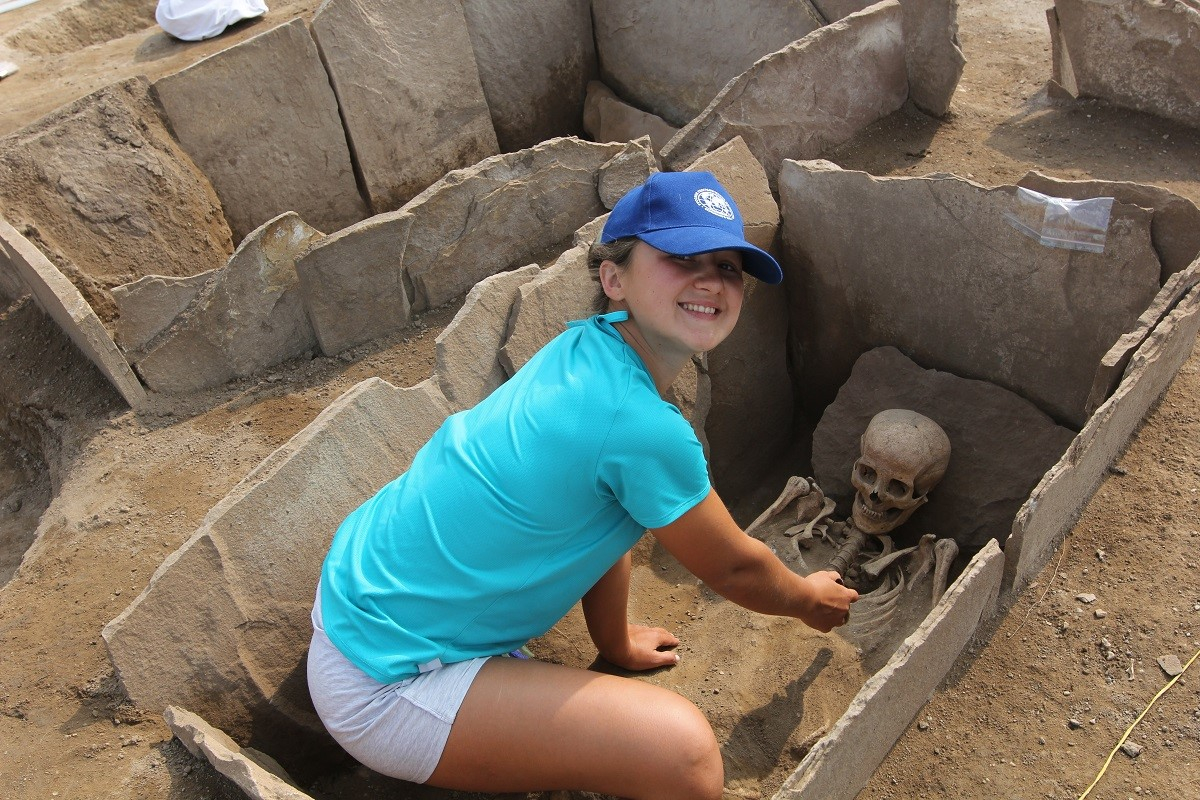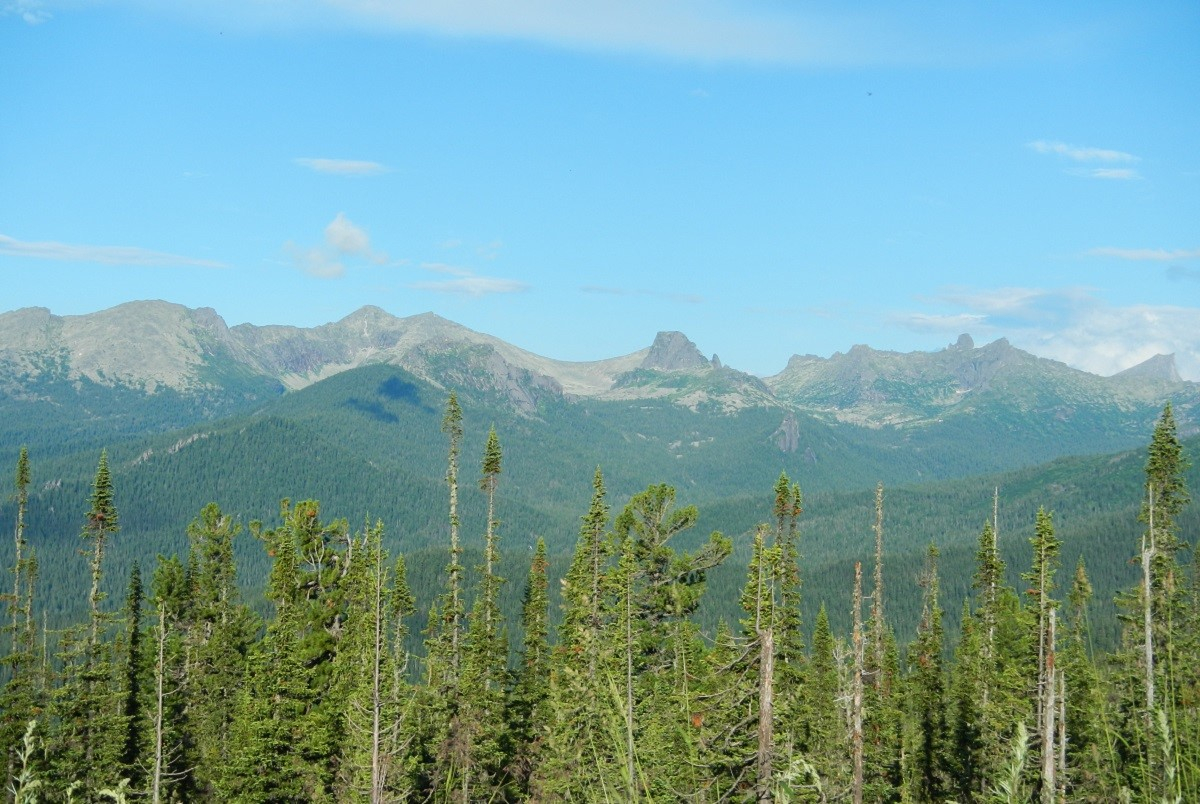Institute for the History of Material Culture Director Andrey Poliakov: "80 percent of Russia’s archaeological monuments remain unidentified"
In an interview for the St Petersburg University website, Andrey Poliakov, Director of the Institute for the History of Material Culture of the Russian Academy of Sciences (RAS) and a graduate of St Petersburg University, discussed the training of archaeologists, the evolution of science, generational continuity in archaeology, and museum exhibitions.

Dr Poliakov, you are a St Petersburg University graduate. Could you please tell us about your studies at the University? Have the academic traditions been maintained?
I am indeed a graduate of the University. The Department of Archaeology at St Petersburg University is one of the oldest in the country, and I chose to study there specifically. All of my school teachers were either St Petersburg University lecturers or both lecturers and graduates of the University. Therefore, I had a very close connection with the University from the very start of my studies.
Of course, I recall my years of study at St Petersburg University with great gratitude, particularly, my teachers, who imparted so much knowledge, and the expeditions I joined as a student at the University with a 300-year-old history. It was during these formative years that my future relationship with archaeology as a science truly took shape.
Is generational continuity in science still maintained today?
Certainly. There is a regional component to the work of archaeologists. We traditionally focus on specific territories, and this work has been ongoing for decades, even centuries. The Institute for the History of Material Culture of the Russian Academy of Sciences, which I now lead, is the successor to the Imperial Archaeological Commission, established 165 years ago by decree of Emperor Alexander II of Russia. Thus, the foundations of the archaeological interests of the Institute and the University were laid during those years, as these institutions have been closely connected, and this connection endures today.
For instance, I am a "grand-disciple" of Mikhail Griaznov, who, in the middle of the 20th century, laid the foundations for the St Petersburg (then Leningrad) school of archaeology, focusing on the study of Siberia and Central Asia. This continuity persists to this day. My teachers were taught by the very pioneers who, some 50-60 years ago, were establishing the main directions of archaeology in the country.
It turns out that archaeology is a relatively young science compared to other disciplines, and the scientific schools that we are discussing were established quite recently. Am I right?
Actually, no. For a long time, archaeology was entirely unregulated and developed spontaneously. In Imperial Russia, if a count wanted to excavate burial mounds and explore their contents, he simply did so. During those days, there were no regulations, and no permits or reports required.
The establishment of the Imperial Archaeological Commission in 1859 marked the beginning of regulation in the field of archaeology in our country. Moreover, it signalled the formation of a state approach to archaeology and the development of a state policy regarding archaeological work. Thus, the scientific field itself was established long ago; yet, the regulatory framework for archaeology in our country — including the protection of monuments, ensuring a unified scientific space, issuing permits for excavations, collecting reports, and the mandatory preservation of information about the work carried out — emerged only at the end of the 19th century.
Do you think archaeology changes over time? Is it evolving?
Every science undergoes significant transformations over the course of its development. Having been engaged in scientific research for over 30 years, I have witnessed many substantial, even epochal, changes. First of all, there is now a widespread acceptance of natural-scientific methods in archaeology. While these methods previously existed, it is only in recent decades that approaches such as palaeogenetics, isotope analyses, and many others have been extensively integrated into archaeological research. Secondly, the very essence of archaeology has been evolving. It used to be primarily descriptive: a researcher would excavate, document finds with schemes and drawings, and then draw some conclusions.
Today, before drawing conclusions, researchers conduct numerous tests that enable them to obtain information that cannot be obtained through visual inspection alone. Furthermore, various dating methods, particularly radiocarbon and dendrochronological techniques, are advancing rapidly. For instance, the radiocarbon method was developed quite some time ago, with the first laboratories in our country emerging in the 1960s. Notably, the oldest such laboratory in Russia is still operational at the Institute for the History of Material Culture of the Russian Academy of Sciences.
In the early days of the radiocarbon method, archaeologists did not understand how to select samples appropriately, and laboratory technicians grappled with cleaning them to remove extraneous impurities. Consequently, the initial findings were rather controversial. We can now say that we have moved beyond the "adolescence" of this method and have learned to use it much more effectively, opening up a great many new opportunities.
In your experience, have many St Petersburg University students and graduates joined the Institute for the History of Material Culture of the Russian Academy of Sciences as researchers?
Today, graduates of the Department of Archaeology at St Petersburg University make up 80 percent of the research staff at the Institute, and maintaining this close cooperation is of great importance to us. A significant milestone in recent years became the signing of a partnership agreement with the University. Since then, the Department of Archaeology has served as the base for the Institute for the History of Material Culture of the Russian Academy of Sciences. This has been a major and very important step for us.
Many research staff members, specialising in various subfields of archaeology, teach their own courses at the University. This facilitates direct communication with students and helps to identify those with the potential to pursue careers in academic science. Yet, it is important to note that not all graduates of the Department of Archaeology secure employment in academic institutions. There is a wide range of opportunities in other areas, including museums both in the city and across the country, higher education institutions, monument protection bodies and even commercial structures that require expertise in these areas.
I can honestly say that having one or two students from a year cohort enter science is already a significant achievement. In any case, our Institute does not have a high turnover rate, and we cannot recruit many graduates due to our strict staffing plan. Nevertheless, selecting potential employees is crucial for us. I am a prime example of this: when I joined the Institute, there were ten of us in my class year, but only four graduated. Of those four, only two ultimately pursued careers in science.
Currently, about 10 of our research staff members teach various courses in the Department of Archaeology at St Petersburg University. In fact, we do not distinguish the academic staff of the Department from our Institute’s research staff, as we all work hand-in-hand and collaborate closely. We invite them to all our special events, including the Day of the Institute, and we organise academic conferences together. For instance, at the recent St Petersburg Historical Forum we co-organised panel sessions on archaeology, some of which were held at the Institute with the involvement of the University’s Department of Archaeology academics. They were actively engaged in these events. Additionally, our cooperation extends to research projects. Today, little can be achieved in science without collaboration. We are gradually catching up with the natural scientists, who have long benefited from collaborative research publications — the fruits of the labour of many specialists in different fields.
Do St Petersburg University students participate in your research expeditions?

Naturally, this is an important aspect of university education, but many students continue to work in the expedition even after completing their internship programmes. For instance, one of my students spent this summer in Siberia, working the entire season on a large rescue expedition and gaining invaluable experience. All students in the Department of Archaeology at St Petersburg University are required to complete a research internship every summer. Our department has a tradition of dual research supervision: in addition to an academic supervisor from the Department of Archaeology, students also have an external research supervisor. The latter can be from the State Hermitage Museum, our Institute, or any other reputable research organisation. Often, students join expeditions with their external supervisors.
What is the division of authority between the internal academic supervisor and the external research supervisor?
We all know each other well and everyone is interested in effective communication, so this is not an issue. Academic supervisors are eager for students to have external research supervisors because this arrangement provides students with the opportunity to work with authentic archaeological material related to their research topics. This hands-on experience enhances their professional skills and leads to better-quality graduation projects.

For instance, there are archaeological finds excavated some time ago that need to be processed — this provides excellent material for term and graduation projects. Very often, archaeologists simply lack the time to describe and systematise everything they have unearthed. Processing finds is a meticulous task: it involves not only describing an artefact but also searching for analogies in neighbouring regions and other cultural contexts, conceptualising it, drawing parallels, and more. Time constraints often prevent the comprehensive processing of all finds. For students, however, this is an invaluable opportunity. They get to work with real archaeological material and can make significant contributions to science. Also, this practical experience often results in joint publications in research journals.
My next question is about this very topic. Do students participate in scientific events?
We try to do our best to involve them in scientific events. I always advise my students that if they aim to pursue a career in science, they should start during their first year at the University. My advice includes attending relevant conferences and departmental meetings. Our Department has an open-door policy, and we extend invitations to everyone. We appreciate volunteer assistance and are pleased to have engaged listeners. Naturally, we welcome participation in research projects. The earlier one gets involved in science, the better.
Do you think students need to know how to operate modern scientific equipment?
Modern archaeologists must be able to work with equipment like total stations, or theodolites, and relevant software such as AutoCAD. Researchers should understand how to operate this equipment so that they can supervise technicians who will be operating the equipment during expeditions. Today, there is extensive use of drone photography in archaeology. Many archaeologists also employ various GIS software in their research. This is not to mention specialised areas like traceology, i.e. the study of physical traces on an artefact’s surface, which involves the use of different types of microscopes. Of course, our students are introduced to the modern scientific equipment, but they will need to further develop their practical skills in future at workplace.
What territories are St Petersburg archaeologists exploring today? What project, in your opinion, is of most significance?
It is a time-honoured tradition that we work in the Republic of Khakassia, the Republic of Tuva, in the southern part of Krasnoyarsk Krai, and occasionally Altai and Transbaikalia. We have been studying these regions for nearly a century. In the European part of Russia, the Institute for the History of Material Culture of the Russian Academy of Sciences conducts research across dozens of regions, ranging from the Kola Peninsula to the Crimea and from Kaliningrad to the Caucasus.

We also conduct joint research projects with international archaeologists. Notably, we have an active collaboration with our colleagues from China. Recently, a team of our researchers returned from a joint expedition in the Caucasus, where they worked alongside Chinese archaeologists to study Palaeolithic cave sites.
We have a very interesting expedition in Mongolia, in collaboration with the Institute of Archaeology of the Mongolian Academy of Sciences. Our focus is on border areas rich in intriguing archaeological sites. This year, for instance, we initiated the study of a large cluster of petroglyphs located on a site that straddles the Mongolia-Russia border. Additionally, we are conducting significant research in Syria.
The story of’ the Monumental Arch of Palmyra, devastated by terrorists in 2015, continues to unfold. Following the explosion, our Institute’s research team conducted a post-traumatic response evaluation. We carefully dismantled and studied the remaining fragments to assess the damage, then developed a restoration project. Presented to UNESCO, our plan received highly positive feedback. We now await the next phase: the commencement of restoration work under our scientific supervision. In keeping with tradition, we are engaged in numerous international research projects, including significant studies in Turkmenistan and other countries.
We cannot overlook our base region — the North-West of Russia. Among our primary sites is Rurikovo Gorodische — the ancient predecessor of Veliky Novgorod. Another unique site is Staraya Ladoga, which we have been studying for over a century. Throughout this period, we have consistently gained important insights into the origins of Ancient Rus’ statehood.
Dr Poliakov, when discussing archaeology, it always appears that scholars have a vast and untapped field for research.
Absolutely. Russia is an expansive country with a rich history, and I believe it is impossible to explore everything we have in the near future. There will be ample work for many generations of archaeologists to come. Currently, we face a significant challenge: we cannot even list all the monuments for state protection. At present, at least 80 percent of archaeological sites in our country remain unidentified and unregistered. This poses an issue for archaeology, as cataloguing and protecting these sites across our vast territories is a costly and large-scale project that will take many years to complete.
Are new archaeological sites for research still being discovered in our country or abroad?
Our primary focus is on our own regions, as it is ineffective to engage in an area without specialised expertise. In Russia, every region has archaeologists actively engaged in ongoing archaeological research. However, no single institute can cover our vast country alone. Therefore, we have numerous archaeological institutes in the country. The three main institutes are located in Moscow, St Petersburg, and Novosibirsk. Also, there is the Institute of Archaeology in Kazan that specialises in the archaeology of the Golden Horde and the Upper Volga region. The recently established Institute of Archaeology of the Crimea focuses on new territories. There are also institutes in the Urals and the Far East. In fact, we have a significant number of research institutions dedicated to archaeological research. Moreover, alongside these research institutions, museums, universities, and regional institutes also conduct their own archaeological expeditions.
Further exploring this topic, I would like to ask about the museum activities that archaeologists are involved in today. How important and in-demand are these activities?
The reality is that archaeologists accumulate a vast amount of materials, but not all of them are suitable for exhibition. While they all have scientific value, not all are of interest to museums.
For instance, we may want to transfer an entire collection to a museum, but hundreds of thousands of broken clay pots may not be worthy of being displayed in a museum. The museum might only be interested in a bronze knife. I understand their perspective: funds and storage facilities are limited, and holdings need to be stored and displayed judiciously.
Currently in Russia, there is a proposal to establish so-called archaeological depositories. These facilities would serve as intermediaries between archaeological institutes and museums, providing a space to preserve extensive archaeological collections. Archaeologists would submit their finds to the depository, and museums could then request specific artefacts for exhibitions as needed. This approach is both sound and practical, although it will require financial support, because the depositories need to be built and maintained.
At present, however, it is scholars who are responsible for transferring archaeological artefacts to museums. While this creates certain challenges, as researchers may spend much of their time preparing collections for display, it remains a crucial aspect of our work and responsibility. After all, archaeological finds should not be confined to research institutions.
We collaborate closely with museums and co-organise exhibitions, for instance, with the State Hermitage Museum. These exhibitions often showcase not only archaeological collections but also archival documents. For instance, the exhibition "Dreams of Siberia," which explores the ancient and medieval past of Siberia and the Far East, recently moved to Krasnoyarsk after successful runs in Moscow and Vladivostok. While the exhibition is obviously adapted for each new location, it retains its core scientific focus, presenting Siberian archaeological materials within the context of modern creativity.

